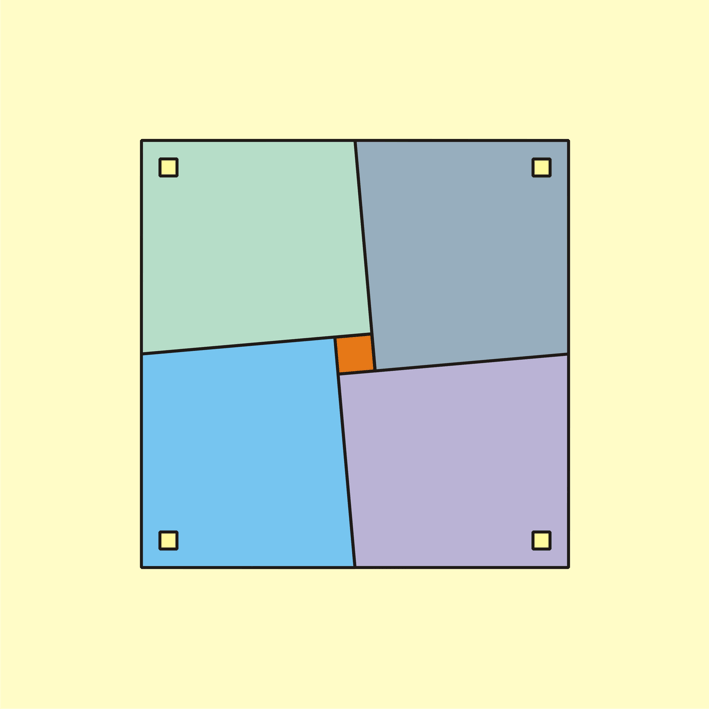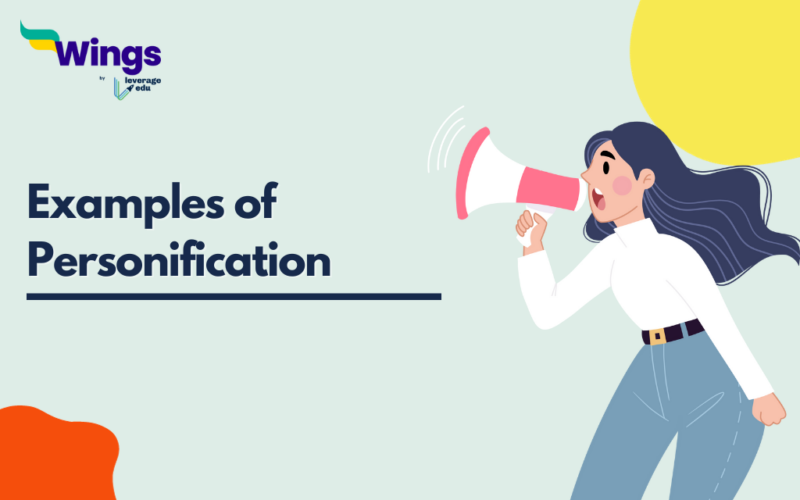Personification refers to a figure of speech where human characteristics are attributed to a non-human object. In bookish language, ‘personification is the practice of using objects, quantities and other things as humans in art and literature.’ A lot of types, of abstract objects are also personified.
The most common example of personification is when we describe the wind as blowing, or the sun shining. In this example, the nonliving object (the wind or the sun) is described as if it were alive and could act on its own accord. Personification allows writers to create life and motion within inanimate objects, animals, and even abstract ideas by assigning them recognizable human behaviours and emotions. Greek mythology is a relevant example of personification.
Must Read: How to Improve English Vocabulary?
This Blog Includes:
- What is Personification?
- Why Do Writers Use Personification?
- What is the Purpose of Using Personification?
- Tips for Using Personification Effectively
- Examples
- Examples of Personification in Literature
- Difference Between Personification and Anthropomorphism
- Test Your English Proficiency with this Editing Quiz!
- FAQs
What is Personification?

Personification examples can be found everywhere, from film to prose to poetry. For example, think about how often you hear someone say ‘The rain feels so good on my skin’ or ‘ love the smell of fresh snow.‘
The personification definition we have established so far is pretty basic, but what makes it a literary device? Writers use it to achieve different effects. Some writers use it to add color and imagery to their text while others use it to imbue objects with human attributes. The point of using personification is to help the reader better visualize certain elements of the story or poem.
Why Do Writers Use Personification?
Telling a story with no personification can be difficult because it’s hard for readers to relate without ascribing human qualities to the characters and objects in your tale. When you use personification, you give everything in your story a sense of character and identity. Even if you don’t want everything in your story to be humanized, bringing inanimate objects and characters to life through personification can make them richer and more relatable.
In modern literature, personification examples are often found in descriptive language. Writers use this tool to deliver a more vivid image of a subject or setting by adding human qualities like emotions and motivations. By doing so, authors are able to paint a picture that is more compelling than just delivering facts or providing a plain description of something. Let’s look at some examples of how this literary device works in common phrases and sentences:
“The sun was shining on the beach.” which implies ‘the sun smiled down on the earth’.
This technique is used in both prose and poetry. In fact, the roots of personification can be found in ancient literature. It has been used for thousands of years to help writers describe fantasy creatures like mermaids and dragons.
Also Read: Examples of Simile
What is the Purpose of Using Personification?
Personification is a literary device that uses human qualities to describe nonhuman things. Personification may be used to:
- Describe objects and ideas in terms of human characteristics, behaviour, and emotions. To describe something or someone clearly by using metaphors, similes, and figurative language.
- Create a more vivid depiction of reality by adding sensory details that relate to the five senses (sight, smell, touch, taste, and hearing).To give voice to inanimate or abstract things with human emotions and thoughts. To make the audience relate to a person or thing better (by putting themselves in the shoes of that thing or person).
- Help the reader make a deeper connection with the story by creating human qualities for inanimate objects (such as stars in the night sky) or animals (such as bears). To make a story more interesting by adding details and description through personification.
- Illustrate a setting by describing various elements including weather and the setting itself.
Personification is a technique that is frequently used in literature, and it’s one that can add a lot of personality to your writing. The basic idea behind personification is that you take an object or animal and give it human qualities, such as emotions or thoughts.
For example, instead of just describing the wind as blowing, you might describe it as “breathing” across your face. When you do this, you’re personifying the wind. You’re making it seem like a living thing.
Must Read: 50 Common Proverbs with Meaning and Examples!
Tips for Using Personification Effectively
- Use it purposefully: Don’t use personification when your writing doesn’t need it. When you’re writing a scientific paper or an instruction manual, there’s no room for cute phrases like “mushrooming clouds” or “dancing leaves.” Don’t distract readers by adding something unnecessary to your writing.
- Keep descriptions short: Long stretches of overly poetic language can be hard to read and understand. Be brief while still creating an image in the reader’s mind using personification.
Examples




- The wind howled outside her bedroom window.
- The grease jumped out of the pan.
- The leaves let go of the tree and danced to the ground.
- The wind was angry that night.
- During the night, the blanket crept up until it was snuggled under my chin and my feet were bare.
- The big, full moon confidently led me through the forest.
- The leaves let go of the tree and danced to the ground.
- The curtains danced in the breeze.
- Her father’s eyes were cold and dark.
- The tree branch scratched and clawed at my windowsill, trying to break into the house.
- Her father looked at her with disdain.
- The diving board taunted me, daring me to approach.
- Her heart sank at the sight of her grandfather’s failing health.
- The door protested as it opened slowly.
- My house is a friend who protects me.
- The mother duck scolded her young, encouraging them to walk in a line.
- The moon smiled at the stars in the sky.
- Justice is blind and, at times, deaf.
- Money is the only friend that I can count on.
- The wind whistled in my ears
- The sea was angry that day
- He sang a lonely song to the moonlight.
- The brown grass was begging for water.
- The silence crept into the classroom.
- December light is brief and uncharitable.
- Clean dishes who sing and dance.
- The old floorboards creaked under my weight.
- The light danced on the surface of the water.
- Stars winked in the midnight sky
- The engine gave one final protest before the car broke down.
- The heat was killing the Republican crowd in the protestant march.
- The dog patiently sat at the door until he was let outside.
- The gentle breeze swept over the field of grass.
- The ocean was calling his name.
- Time marched by
- Sunbeams peaked through cracks in the clouds.
- The city never sleeps
- The city is alive at night
- The train whistled as it arrived at the station
- The thunder cried that night when he died.
- The biting cold stole his breath away.
- The storm raged that night.

Examples of Personification in Literature
Here are some famous examples that will help you understand this literary technique better.
The sun: The sun is one of the most commonly personified objects, as it is said to rise every morning and set every night. In Midsummer Night’s Dream, Shakespeare uses personification for the sun by saying: “I must go seek some dew violets, And see if summer comes again.”
By saying this, Shakespeare connects the sun with feelings of unrequited love of Helena and makes it seem like the sun is going away from her. He makes it seem as though she lives in a world where there are no seasons or days because her love has gone away from her.
Elijah: In Alfred Lord Tennyson’s poem “The Palace of Art”, he uses personification when he says: “The elm-tree avenue, where grew elm trees tall…A narrow aisle they made between them all“. The gardener lovingly added the manure to his crops, believing that he was making happy flowers”. The humanized element with the flowers gives them the quality of the human feeling of happiness.
Also Read: 50 Common Difficult Idioms with Examples!
Difference Between Personification and Anthropomorphism
Due to fundamental similarities, Personification is often confused with the term Anthropomorphism. However, there is a clear difference between these two literary terms. Personification is generally the use of figurative language in a symbolic and representative way to give inanimate objects or natural phenomena humanlike characteristics. On the other hand, Anthropomorphism involves being capable of human behaviour and displaying literal human traits. Personification allows writers to attribute human characteristics to nonhuman things without turning those things into human-like characters, as is done with anthropomorphism.
The examples of Personifications and Anthropomorphism are mentioned below.
Personification- Greek Mythology, The Haunting of Hill House, E E Cummings Poetry.
Anthropomorphism- Animal Farm, Winnie the Pooh, Beauty and the Beast, The Railway Series.
Test Your English Proficiency with this Editing Quiz!
Editing Quiz

Question
Your answer:
Correct answer:
Your Answers
Related Articles
FAQs
Personification can be found in literature, cinema, and common language. Here are some examples: “The sun smiled down on us.” ‘The tale practically leapt off the page.” “The light danced on the surface of the water.”
The wind howled in the night. The car complained as the key was roughly turned in its ignition. Rita heard the last piece of pie calling her name. My alarm clock yells at me to get out of bed every morning.
Personification is a poetic device in which animals, plants, or even inanimate objects are endowed with human characteristics, resulting in a poem rich in imagery and description.
We hope this article on Personification and its examples can help you ace your English exams. For more information on such informative articles for your school, visit our school education page and follow Leverage Edu.
-
GOOD TEST

 One app for all your study abroad needs
One app for all your study abroad needs




















 45,000+ students realised their study abroad dream with us. Take the first step today.
45,000+ students realised their study abroad dream with us. Take the first step today.


1 comment
GOOD TEST